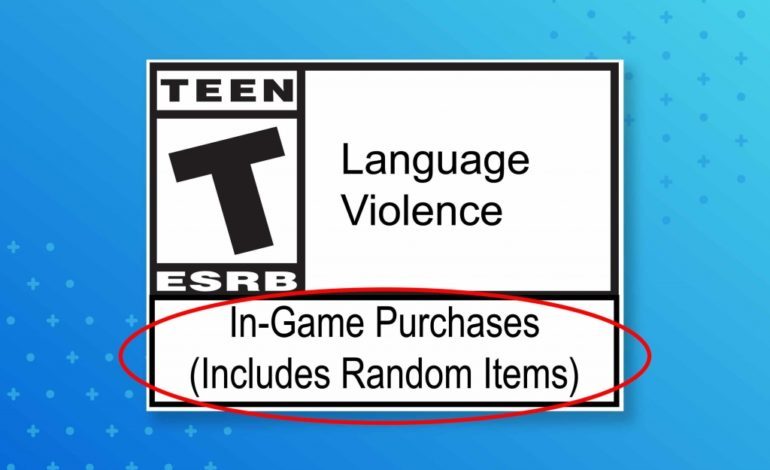

Last year, the ESRB announced a new label that was added to indicate if a game contained in-game purchases. This happened after the rise of loot boxes throughout this generation and the backlash that surrounds them. Now, the Entertainment Software Ratings Board will introduce a new label that is meant to provide even more transparency about what in-game purchases will be offered. The new label is called In-Game Purchases (Includes Random Items).
This label will be given to a game that contains offers available in-game that can be purchased with either real-world currency or with in-game currency that is purchased with real-world currency. This is exclusive to offers that players don’t know they’re getting ahead of time (i.e. loot boxes, item packs, or mystery awards.) Games with the new label may also include other non-randomized paid elements. The original label introduced last year is still going to be assigned to games. The difference being is that these games offer any other types of purchase, including additional levels, cosmetic items, DLC, expansions, etc. The old label will not be assigned to games with “loot boxes” or similar mechanics so everyone understands when a game offers purchases with randomized elements.
The ESRB talked about the new label and why it’s worded the way it is and doesn’t include the term loot boxes. “Loot box” is a term that doesn’t encompass all types of randomized in-game purchase mechanics. We want to ensure that the new label covers all transactions with randomized elements.” The new label is to account for loot boxes and all other similar mechanics that offer random items in exchange for real-world currency or in-game currency that can be purchased with real money.
They also didn’t want to cause any confusion with what a loot box is as recent research shows that less than a third of parents have both heard of a loot box and know what it is. “Loot box” is a widely understood phrase in and around the video game industry and among dedicated gamers, but most people less familiar with games do not understand it. While this new label is primarily in response to feedback from game enthusiasts, it is still essential that all consumers, especially parents, have a clear understanding of the rating information we provide.”
Play games, take surveys and take advantage of special offers to help support mxdwn. Every dollar helps keep the content you love coming every single day.
